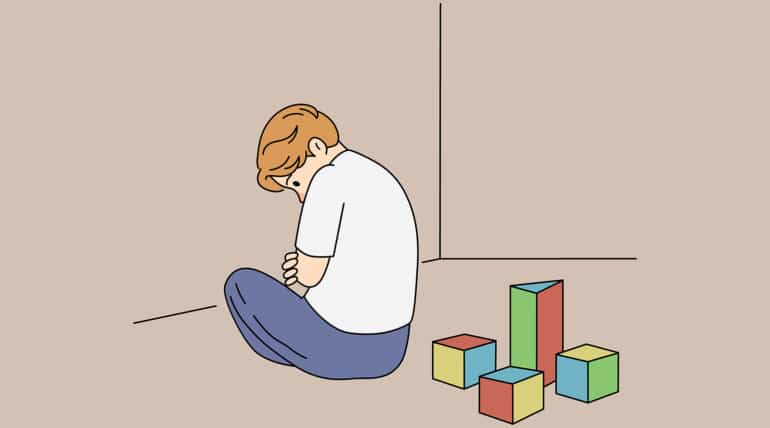Autism diagnoses have grown significantly in the past decade- this is not news to most. However, researchers are focusing in on just how early signs of autism can be identified and, therefore, acted upon and addressed sooner.
This is a surprise, given that it used to be thought that 12-18 months was the ideal autism screening time for a child.
Now, research has identified that markers for autism can be seen as early as 2 months old, through the level of eye contact their baby makes. In fact, 41% of parents of autistic children report observing early signs of autism between 7 and 12 months old. We will further discuss other signs of autism in young infants and what to do about observed signs or suspected autism.
- Eye contact– briefly mentioned above, infants around the age of 2 months old can typically make and keep eye contact with those in their surroundings. Eye contact is used as the infant grows to socialize and form relationships. It may be around this time, however, that a parent may notice a decline in their infant’s eye contact, potentially suggesting early autism.
- Gesturing or pointing- Another deficit an infant may show that suggests early autism is that of gesturing. Gesturing, or pointing is an early way for an infant to communicate its wants and needs. A limited ability or lack of interest in gesturing or pointing could suggest a communication/language delay and potentially autism.
- Interest in the environment – as with eye contact, an infant’s interest in the environment is noticed early in their life and suggests later social and language development. An infant who may later be diagnosed with autism may not display any interest in their environment, including returning smiles at people who walk by or becoming fixated on a toy or blanket instead of following voices, particularly that of a caregiver.
- Skill repertoire- an infant’s goals only consist of eating, sleeping, and skill development in the first year of their lives. Parents of children with autism have reported seeing declines in or loss of skills between ages 18 and 24 months. By age 1, the CDC reports that infants should be able to
-
- Plays social games with their hands, like pat a cake
- Say “mama” or “dada” or another special name (ie, mommy, daddy)
- Pull themselves up to a standing position
- Puts something in a container
- Shows interest in finding an item he saw parents hide
- Makes the “pincer” grip or is able to pinch the thumb and pointer finger to pick up small objects such as cheerios
For many years now, doctors and specialists have not been able to reliably diagnose autism before age 2. This begged the notion that, why even bother focusing on symptoms if a diagnosis cannot be reliably made until 2 years old? However, as research has progressed and continually suggested, early intervention that starts as early as symptoms are noticed gives children the best chance for success, including less severe autism symptoms, as they grow up.
Skill deficits can be addressed in a variety of specialties, including physical therapy, occupational therapy, and even applied behavior analysis for those as young as age 1. Getting help for a child’s lack of social and communication skills early in life will help them build trusted, loving relationships and continue to make strong bonds with family members as they grow older.
A delay or lack of skills does not suggest an inability to learn, and so it is highly recommended that any parent who notices symptoms of autism begin discussions with their primary care provider as soon as possible.




